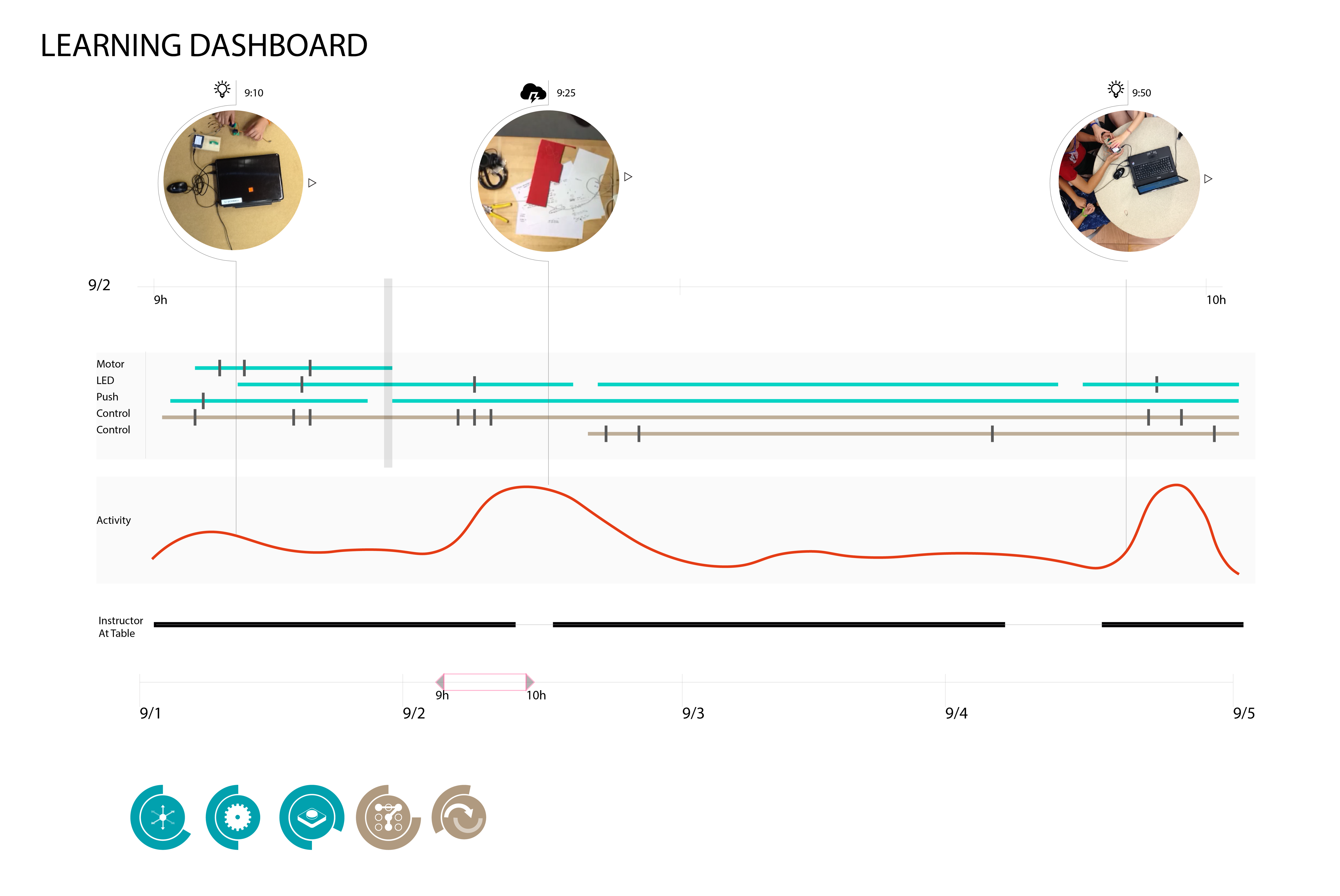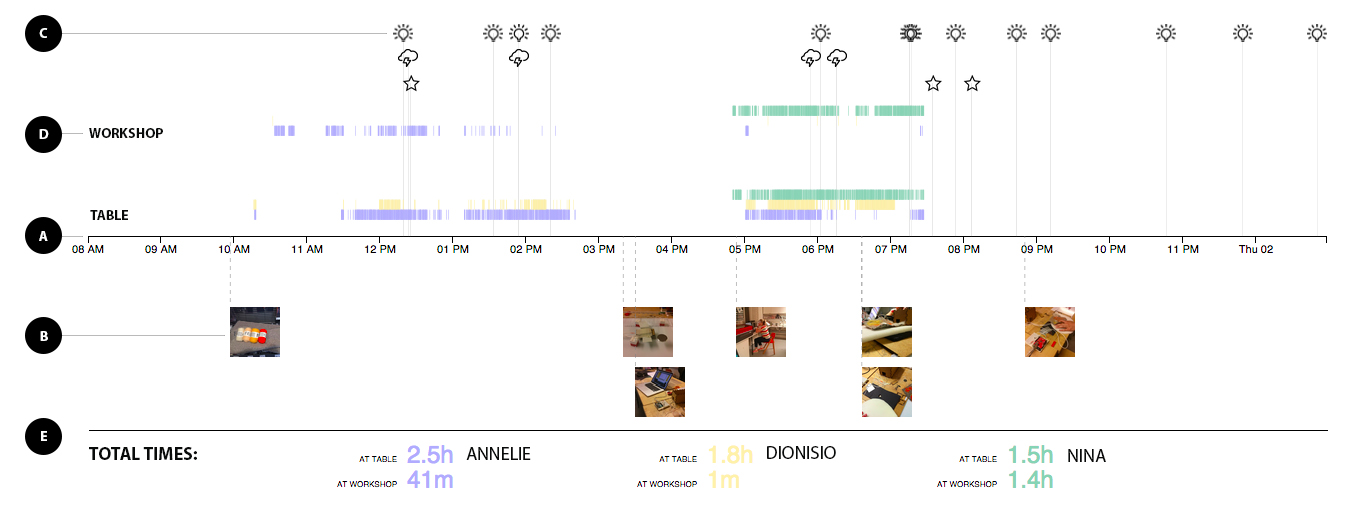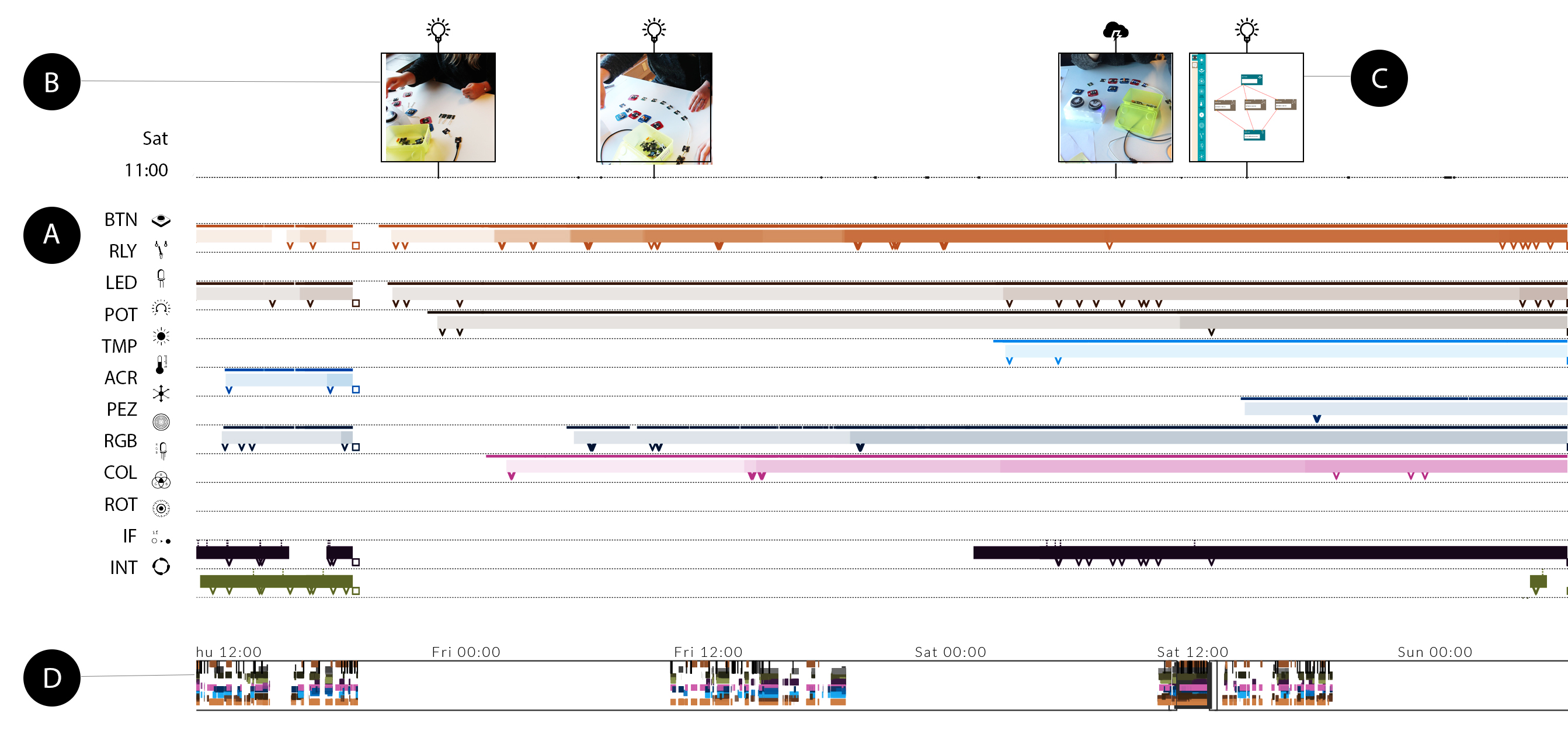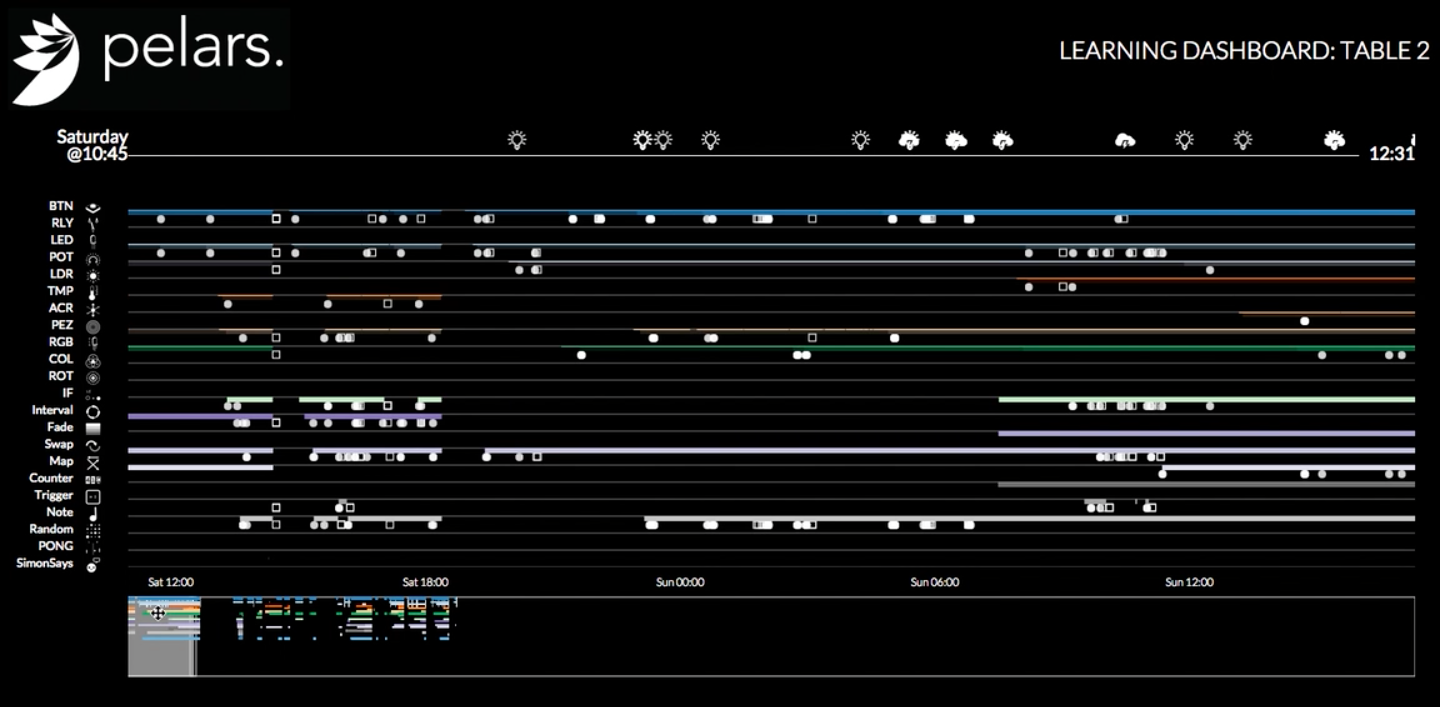We know that learning by doing is crucial to engaging with science, technology, engineering and math - as well as interaction design - yet it can be difficult for students and teachers to keep track of the self-directed process it engenders, the variety of inputs and outputs created, the crucial moments of learning along the way to a final design or product.
CONCEPT
How can we support students to be aware of their process, their learnings, how their frustration can yield pivotal moments in their understanding of a topic, as well as how to share these more "soft" types of data with the teacher? For example, we designed a thudercloud / lightbulb button that students could press to show their frustration / breakthrough. This moment is tracked and visualized on the timeline - along with corresponding image from that moment in the system's active camera.


The mixture of active and passive data streams yield rich fodder for discussion and reflection among student groups and between students and teachers.
PROCESS + PROTOTYPING
As we gathered more data from the PELARS learning and making station, and then narrowed the data down or widened it again to include or exclude various sources, I continued to iterate and prototype versions of the data visualization interface as well as interview, test and report on their potential from working with students and teachers across all three contexts.
For example, we continued the interactive development with an emphasis on uncovering photos from the server based on student comments such as:
"The flat moment on the timeline it's when we were stuck and not doing anything. Mutimedia could help us see what we were doing actually. Maybe another timeline with images that get bigger when you click. Nothing else is missing."










PROCESS + PARTNERS
Our role at CIID Research is about fusing the intersection between the multiple different project partners as well as specifically contributing to the contextual user research, data visualisation prototyping and interface development, as well as contributing to / giving input on specific partner work such as the furniture design of the system and educational analysis aspects.
This means collaborating across cultures, time zones and disciplines - a challenging and rewarding opportunity.
The concept has stemmed from initial research with our partners at the educational institution UCL, Arduino Værksted, and furniture designers at Perch, to name just a few.
CIID Research's Contextual User Research studies were crucial to uncovering and defining opportunities for the PELARS system, and the early field prototyping in the three contexts we studied (high school, engineering and interaction design) allowed for quick turns in direction. We prototyped with integrations such as Instagram and Bluetooth signals to demonstrate to our partners the potential opportunities for relevant data streams.
Github repo
Role:
Researcher, designer, developer.
With Nina Valkanova, Dionisio Paiva, CIID Research
Software:
Javascript/d3, html/css
